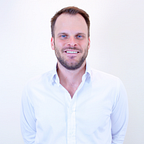Napping — some people have it, some people don’t (and how you can get it!)
The 6 principles I used to become a pro-napper in under three months
Study after study has shown that napping can lead to improved performance, reduced stress and can even make us more creative.
But I couldn’t nap.
Napping is key to Steph Curry’s pregame routine.
“When you wake up from a nap, you know what time it is, you know it’s time to get ready and get focused and go to the game.” Steph Curry
Yes all good and well, but I’ve tried.
And I CAN’T NAP.
I’m the type of person who took a long time to fall asleep at night. When my head hit the pillow, my mind would go into overdrive. My best thinking was done at night, in the calm and quiet of my bed.
If it took me an hour to fall asleep at night….How could I ever relax enough to become a daytime napper?
When I tried, I would spend 20 minutes daydreaming. I would come out of the nap more excitable than I went in.
With hard work and practice, you can nap effectively.
Napping is not sleeping. But the act of lying horizontally and having the intent to calm your mind and body can result in achieving rest and recovery.
Think of napping as a practiced skill — it takes time to master.
I committed to becoming a napper. And trained like a pro. Over 3 months (approx 20–25 naps) I taught myself to nap.
The 6 Principles of napping
#1 — Embrace rest
- Train yourself by CONSISTENTLY take a 20 minute rest and recovery break.
- In the beginning, if you don’t aim to nap — you won’t fail. Embrace your relationship with rest.
#2 — Understand that people are wired very differently
- Measure how you feel pre/post your 20 minutes. Use the learning to increase your commitment.
- I nap for 22 minutes. I takes me 1.5–2 minutes to fall asleep and 20 minutes to nap to be firing.
- Test and learn to find your time & ideal conditions.
#3 — Breathing is the foundation to rest
- What’s the first thing people tell us to do when we are worked up or scared? BREATHE
- Focus the energy of rest break on your breath. You will get distracted — that’s ok. Just calmly refocus.
- Try box breathing, 4–7–8 method (see below) or just giving your breath 100% attention.
#4 — Design a plan
- When and where you rest is important. And again, consistency is key here.
- Think about the problems you have with napping and design some fixes — can’t nap, try resting. Don’t have access to a bed/couch during weekdays? Try taking 20 minutes rest sitting up in your office chair.
#5 — Evolve your naps
- Professional sportsmen look for the most miniscule performance gains that will give them the edge. Do the same for your rest and naps.
- Time of day, length of nap, activities completed pre/post nap, body position — are all opportunities for your evolution.
#6 — Utilise technology to optimize your napping logistics
- Use Siri/Google Assistant to set your nap time — HEY GOOGLE WAKE ME UP IN 22 MINUTES. So easy and smooth.
- Use apps to track your naps on a regular basis. use the data to optimize and evolve
Two other hacks to get you started:
A 60-second technique for falling asleep
Dr. Andrew Weil’s 60-second technique for falling asleep. He teaches the 4–7–8 breathing method. As he demonstrates, it “takes almost no time, requires no equipment and can be done anywhere.”
Once you master it, you can use the 4–7–8 breathing technique during your rest breaks to get your mind ready to nap!
Resting posture and position matters
Think of your favourite sleeping position. Picture where your head, arms, torso and legs are located.
Now imagine standing up in the same position as you sleep — for 6–8 hours.
If you are anything like me, my neck would be in a world of pain as my head is turned sharply to the right. My torso is twisted in the opposite direction. Ouch.
Kelly Starrett advises athletes on rest and recovery through mobility. His overview on sleeping positions is a much watch.
The tip — athletes should sleep on their back with one pillow. You should too.
The benefits of napping are evident. For anyone who wants to be more productive, creative and more alert. You need to nap.
For those who can’t nap — rest easy. With some perseverance and a little help you can become a pro napper in no time.
Keep practicing and happy napping!
